
How to Use Freenove ESP32-E 40pin: Examples, Pinouts, and Specs
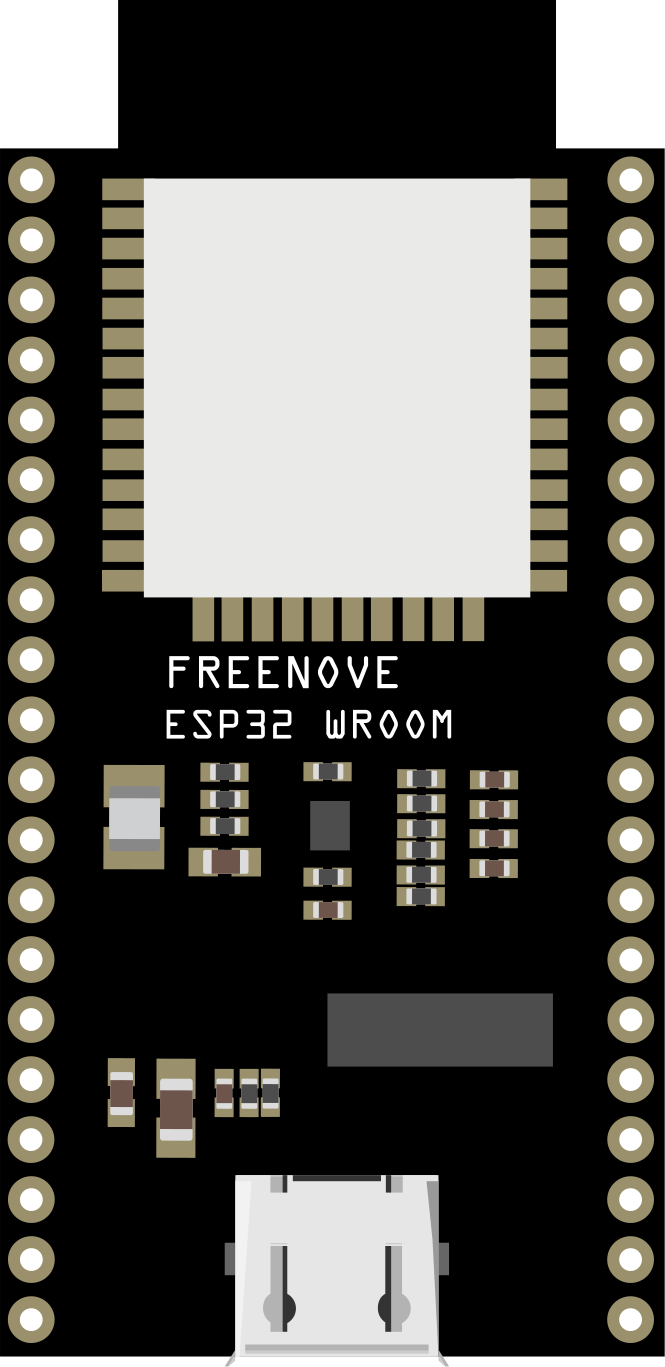
 Design with Freenove ESP32-E 40pin in Cirkit Designer
Design with Freenove ESP32-E 40pin in Cirkit DesignerIntroduction
The Freenove ESP32-E 40pin is a versatile microcontroller board based on the powerful ESP32 chip. It features 40 pins for a wide range of input/output (I/O) connections, making it suitable for complex projects. With built-in Wi-Fi and Bluetooth capabilities, this board is ideal for Internet of Things (IoT) applications, smart devices, and embedded systems. Its compact design and robust functionality make it a popular choice for both hobbyists and professionals.
Explore Projects Built with Freenove ESP32-E 40pin
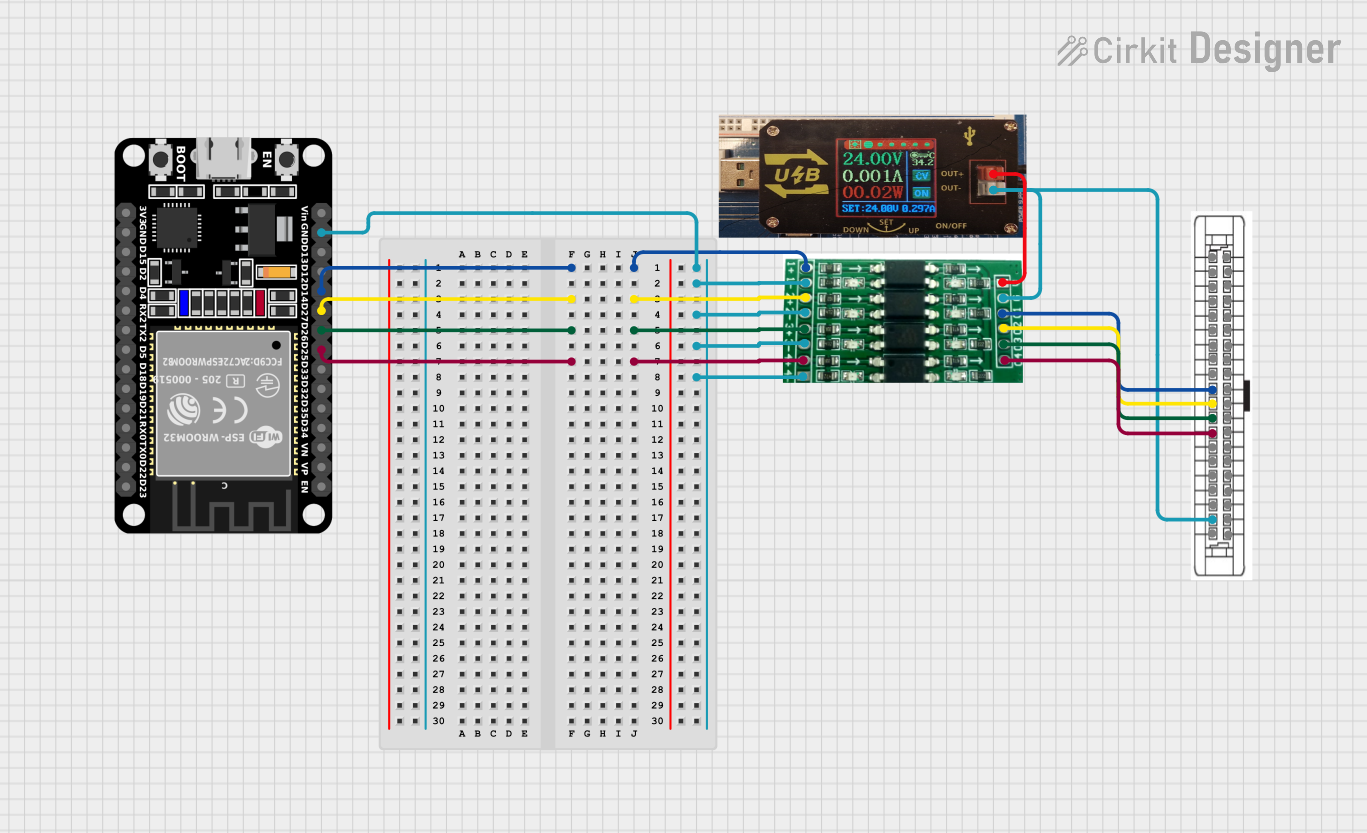
 Open Project in Cirkit Designer
Open Project in Cirkit Designer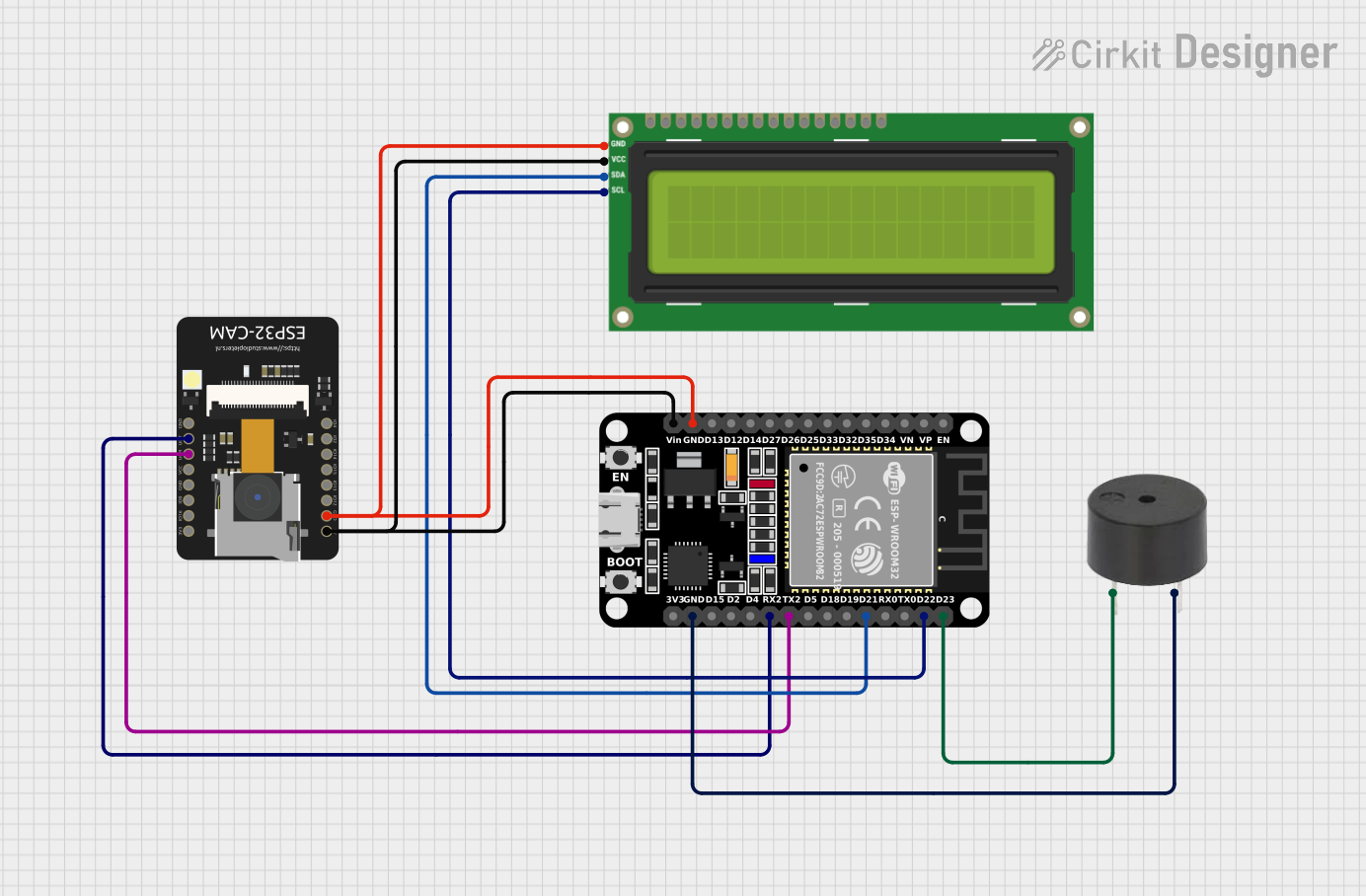
 Open Project in Cirkit Designer
Open Project in Cirkit Designer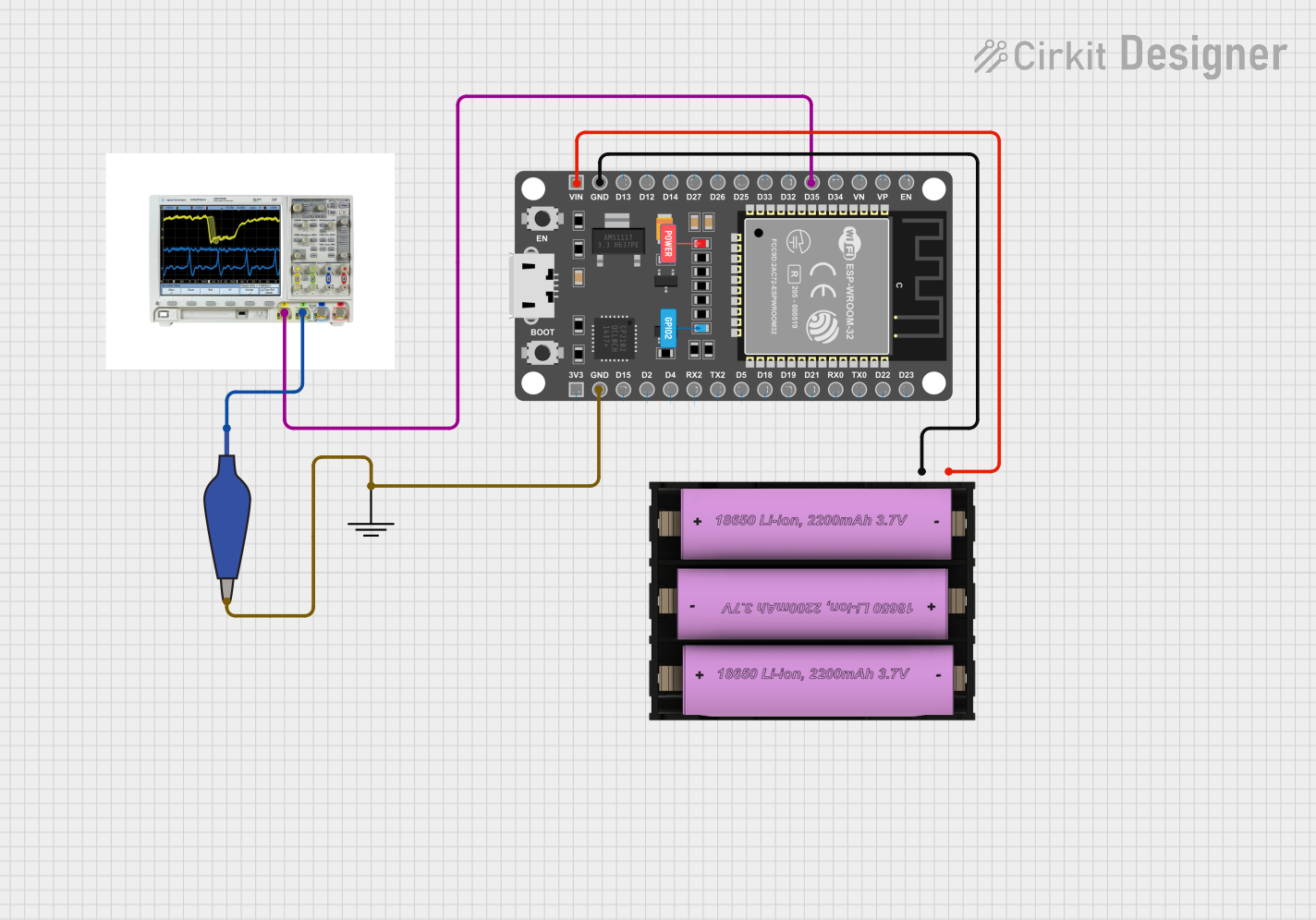
 Open Project in Cirkit Designer
Open Project in Cirkit Designer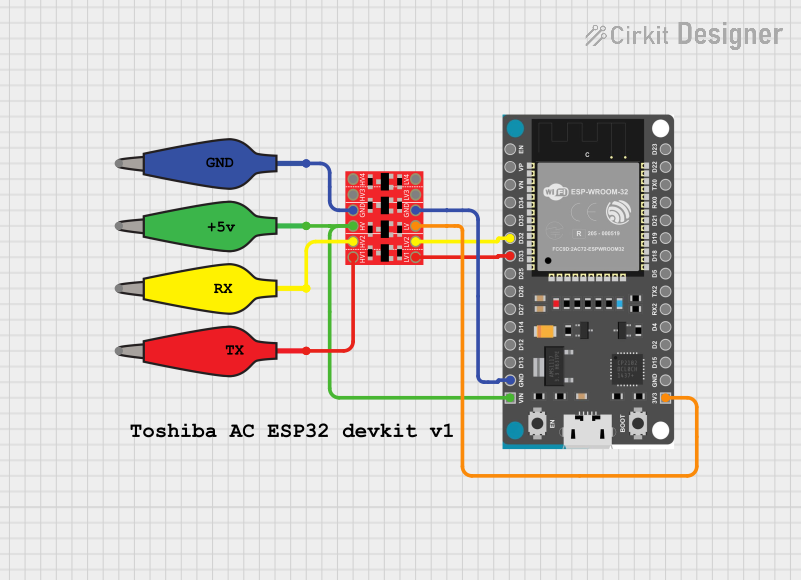
 Open Project in Cirkit Designer
Open Project in Cirkit DesignerExplore Projects Built with Freenove ESP32-E 40pin

 Open Project in Cirkit Designer
Open Project in Cirkit Designer
 Open Project in Cirkit Designer
Open Project in Cirkit Designer
 Open Project in Cirkit Designer
Open Project in Cirkit Designer
 Open Project in Cirkit Designer
Open Project in Cirkit DesignerCommon Applications and Use Cases
- IoT devices and smart home automation
- Wireless sensor networks
- Robotics and motor control
- Data logging and remote monitoring
- Prototyping and educational projects
Technical Specifications
Key Technical Details
- Microcontroller: ESP32 dual-core processor
- Clock Speed: Up to 240 MHz
- Flash Memory: 4 MB
- SRAM: 520 KB
- Connectivity: Wi-Fi (802.11 b/g/n), Bluetooth 4.2 (Classic and BLE)
- Operating Voltage: 3.3V
- Input Voltage Range: 5V (via USB) or 7-12V (via VIN pin)
- GPIO Pins: 34 (configurable as digital I/O, PWM, ADC, etc.)
- ADC Channels: 18 (12-bit resolution)
- DAC Channels: 2 (8-bit resolution)
- UART Interfaces: 3
- SPI Interfaces: 2
- I2C Interfaces: 2
- Power Consumption: Ultra-low power consumption in deep sleep mode (~10 µA)
Pin Configuration and Descriptions
The Freenove ESP32-E 40pin has a total of 40 pins, each with specific functions. Below is a summary of the pin configuration:
| Pin Name | Function | Description |
|---|---|---|
| VIN | Power Input | Accepts 7-12V input to power the board. |
| GND | Ground | Common ground for the circuit. |
| 3V3 | Power Output | Provides 3.3V output for external components. |
| EN | Enable | Resets the chip when pulled low. |
| IO0 | GPIO0 / Boot Mode | Used for boot mode selection or general-purpose I/O. |
| IO2 | GPIO2 | General-purpose I/O pin. |
| IO4 | GPIO4 | General-purpose I/O pin. |
| IO5 | GPIO5 | General-purpose I/O pin. |
| IO12 | GPIO12 / ADC / Touch | Configurable as ADC, touch input, or general-purpose I/O. |
| IO13 | GPIO13 / ADC / Touch | Configurable as ADC, touch input, or general-purpose I/O. |
| IO14 | GPIO14 / ADC / Touch | Configurable as ADC, touch input, or general-purpose I/O. |
| IO15 | GPIO15 / ADC / Touch | Configurable as ADC, touch input, or general-purpose I/O. |
| IO16 | GPIO16 | General-purpose I/O pin. |
| IO17 | GPIO17 | General-purpose I/O pin. |
| IO18 | GPIO18 / SPI_CLK | Configurable as SPI clock or general-purpose I/O. |
| IO19 | GPIO19 / SPI_MISO | Configurable as SPI MISO or general-purpose I/O. |
| IO21 | GPIO21 / I2C_SDA | Configurable as I2C SDA or general-purpose I/O. |
| IO22 | GPIO22 / I2C_SCL | Configurable as I2C SCL or general-purpose I/O. |
| IO23 | GPIO23 / SPI_MOSI | Configurable as SPI MOSI or general-purpose I/O. |
| IO25 | GPIO25 / DAC1 | Configurable as DAC output or general-purpose I/O. |
| IO26 | GPIO26 / DAC2 | Configurable as DAC output or general-purpose I/O. |
| IO27 | GPIO27 | General-purpose I/O pin. |
| IO32 | GPIO32 / ADC / Touch | Configurable as ADC, touch input, or general-purpose I/O. |
| IO33 | GPIO33 / ADC / Touch | Configurable as ADC, touch input, or general-purpose I/O. |
| IO34 | GPIO34 / ADC | Input-only ADC pin. |
| IO35 | GPIO35 / ADC | Input-only ADC pin. |
Note: Not all GPIO pins support all functions simultaneously. Refer to the ESP32 datasheet for detailed pin multiplexing information.
Usage Instructions
How to Use the Component in a Circuit
- Powering the Board:
- Use a USB cable to power the board via the micro-USB port (5V input).
- Alternatively, supply 7-12V to the VIN pin for external power.
- Connecting Peripherals:
- Use the GPIO pins to connect sensors, actuators, or other devices.
- Ensure the voltage levels of connected devices are compatible with the 3.3V logic of the ESP32.
- Programming the Board:
- Install the Arduino IDE and add the ESP32 board support package.
- Connect the board to your computer via USB and select the appropriate COM port.
- Write and upload your code to the board.
Important Considerations and Best Practices
- Voltage Levels: The GPIO pins operate at 3.3V. Avoid connecting 5V signals directly to the pins to prevent damage.
- Boot Mode: Ensure GPIO0 is not pulled high during boot to avoid entering programming mode unintentionally.
- Power Supply: Use a stable power source to avoid unexpected resets or instability.
- Deep Sleep Mode: Utilize the deep sleep mode for battery-powered applications to minimize power consumption.
Example Code for Arduino UNO Integration
Below is an example of how to blink an LED connected to GPIO2:
// Example: Blink an LED connected to GPIO2 on the Freenove ESP32-E 40pin
#define LED_PIN 2 // GPIO2 is connected to the LED
void setup() {
pinMode(LED_PIN, OUTPUT); // Set GPIO2 as an output pin
}
void loop() {
digitalWrite(LED_PIN, HIGH); // Turn the LED on
delay(1000); // Wait for 1 second
digitalWrite(LED_PIN, LOW); // Turn the LED off
delay(1000); // Wait for 1 second
}
Tip: Use the Serial Monitor in the Arduino IDE to debug your code and monitor outputs.
Troubleshooting and FAQs
Common Issues and Solutions
Board Not Detected by Computer:
- Ensure the USB cable is functional and supports data transfer.
- Install the correct USB-to-serial driver for the ESP32.
Upload Fails with "Failed to Connect" Error:
- Press and hold the "BOOT" button on the board while uploading the code.
Wi-Fi Connection Issues:
- Verify the SSID and password in your code.
- Ensure the router is within range and supports 2.4 GHz Wi-Fi.
Unstable Operation or Random Resets:
- Check the power supply for stability.
- Avoid excessive current draw from the GPIO pins.
FAQs
Q: Can I use 5V sensors with this board?
A: Yes, but you will need a level shifter to convert 5V signals to 3.3V.Q: How do I reset the board?
A: Press the "EN" button to reset the board.Q: Can I use this board with MicroPython?
A: Yes, the ESP32 is compatible with MicroPython. Flash the firmware to get started.
By following this documentation, you can effectively utilize the Freenove ESP32-E 40pin for your projects.